Since the beginning of the jet age one of the key determinants of the flight performances of combat aircraft has been the specifications of their engines. While multiple features make an engine design attractive, including ease of maintenance, time between necessary overhauls, the weight it adds to the aircraft carrying it, and its fuel efficiency, the most widely recognised single characteristic remains the amount of thrust it can put out. More powerful engines are an important facilitator of multiple aspects of an aircraft’s flight performance, including climb rate, speed, operational altitude and manoeuvrability in multiple different flight envelopes. Aircraft with more thrust relative to their weights also tend to require shorter runways to take off from, which can be a key advantage in wartime as airfields come under bombardment. Engines capable of generating more power are also better able to power the onboard systems on an aircraft, including radars, electronic warfare systems and in future likely directed energy weapons such as lasers.
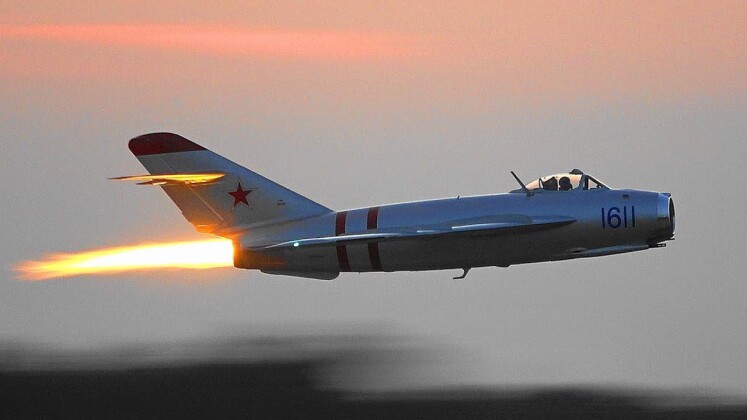
The world’s most powerful jet engines for decades consistently came from the United States and the Soviet Union, before the USSR’s disintegration in 1991 led post-Soviet Russia to gradually cede its advantage in this field. Since the end of the Cold War, China’s rise to become the world’s largest economy from 2014, the world’s largest spender on defence acquisitions from 2020, and the world’s leading patent filer by a very large margin, have been among the factors allowing it to also emerge from the late 2010s as a world leader in engine design. Beyond these three great powers, combat aircraft coming from third parties such as France have consistently been far lighter and used much weaker powerplants which cannot compete in anything close to the same league particularly in terms of sheer thrust. A look at the five most powerful engine designs to have flown on fighter aircraft is given below:
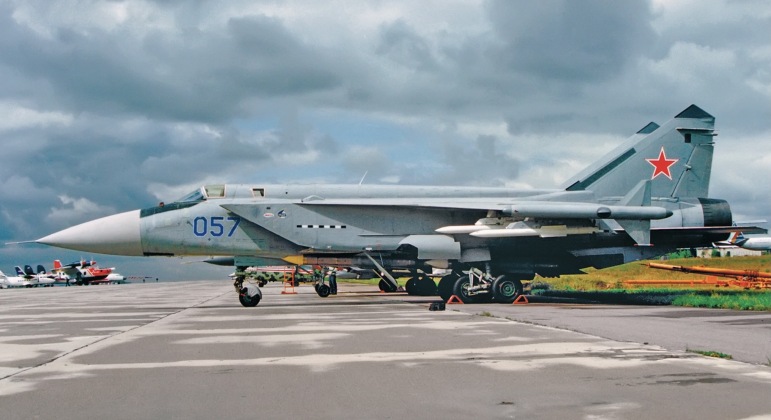
D-30F-6M – MiG-31M: 195 kN Thrust
The D-30F-6M was developed for the MiG-31M interceptor which first flew in 1985, and was scheduled to enter service in the early 1990s as the Soviet Air Defence Forces’ prime interceptor. The original MiG-31 Foxhound which entered service in 1981 remains the heaviest fighter or interceptor in the world at approximately 41,000kg with a combat load, and carries the largest radar ever integrated onto a combat jet the N007 as part of its Zaslon wepaons control system. The aircraft’s cruising speed of close to Mach 2.5 remains by far the fastest in the world, while its regular operational altitude of well over 20,000 metres is also the world’s highest. The aircraft’s D-30F-6 remains by far the most powerful to have entered service integrated onto a pre-fifth generation fighter or interceptor, putting out 152 kN of thrust.
The MiG-31M’s enhanced and much more fuel efficient the D-30F-6M was 28 percent more powerful at approximately 195kN, far surpassing any other in the world today. This allowed the MiG-31M to cruise even faster and higher, carry a radar that was far larger still, and carry by far the world’s largest missile arsenal including six oversized R-37 missiles and multiple smaller ones. The rapid deterioration of the Russian economy after the disintegration of the Soviet Union ultimately prevented the country from financing serial production of the MiG-31M, despite its development being complete, with funding shortages until the 2010s even prevented significant upgrades to the older MiG-31s. The interceptor and its engine were fully ready for serial production by 1994 despite post-Soviet delays.
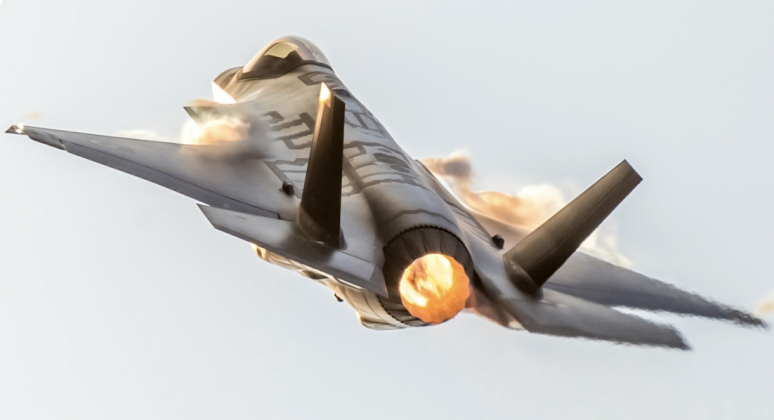
F135 – F-35: 191 kN Thrust
The F-35 fifth generation fighter entered service in 2015 with an engine, the F135, that was at the time unrivalled in its thrust. With just one engine, however, even the this powerplant has proven insufficient to allow the F-35 to cruise at supersonic speeds, while its maximum speed of Mach 1.6 and altitude ceiling of approximately 15,000 metres being well below average. This reflects the fact that the F-35 was never designed to prioritise a high flight performance, and was intended primarily as a strike fighter rather than for air to air combat. The F135 has proven highly problematic since entering service, causing fighter unavailability at 600 percent the rates of other American fighter engines, and requiring particularly high levels of maintenance. Significant changes to the F-35’s design during its development, resulting in a much larger aircraft with significantly higher power demands, has meant that the F135 is considered far from sufficient to power the aircraft’s avionics. This issue has caused tens of billions of dollars worth of damage to the fleet since the fighter entered service, and fuelled calls for development of a new engine.
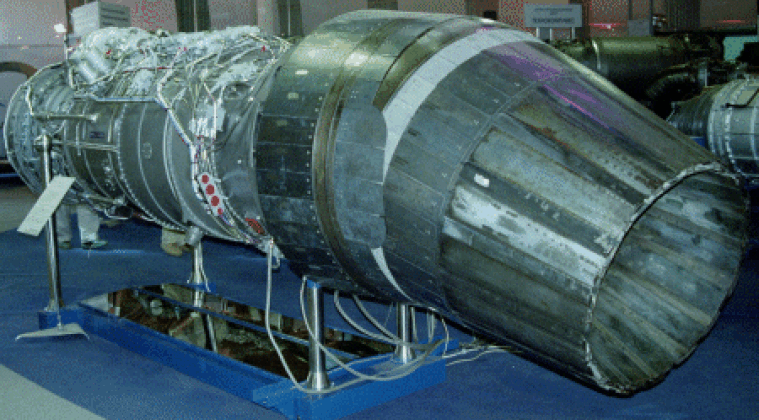
AL-41F – MiG 1.42: 191 kN Thrust
The MiG 1.42 fighter program began development in 1979 to provide a long range air superiority fighter capable of operating deep inside enemy airspace, and thus providing a fifth generation successor to the Su-27 Flanker which would joined the Soviet fleet from 1984. The aircraft was significantly more ambitious for its time than the later Su-57 fifth generation fighter produced in Russia, and was estimated to cost approximately twice as much to produce while having significantly higher lifetime and operational costs. The aircraft’s AL-41F engines put out much greater thrust and had a higher thrust/weight ratios than any used on a twin engine fighter to this day, and were estimated to have a maximum thrust of 191 kN. The engine began serial production at the end of the 1990s with over a dozen built, although the termination of the MiG 1.42 program, which was considered far from affordable for the cash strapped post-Soviet Russian defence ministry, meant it never entered service. The engine had been extensively flight tested throughout the 1990s including at high supersonic speeds using a number of aircraft as testbeds, including a MiG-25 interceptor and a Tu-16 bomber. Although six MiG 1.42 prototypes had begun production when the program was cancelled, none were ever completed and the only flight capable airframe the program produced was a basic technology demonstrator designated MiG 1.44.
(The designation AL-41 was later used for an enhanced derivative of the Su-27’s AL-31 engine which used some of the technologies developed for the MiG 1.42’s powerplant to reduce its maintenance needs and increase its thrust. The resulting engine is significantly weaker, however, and is designated AL-41F-1S. It has a thrust of 137 kN, meaning its maximum thrust is 28 percent lower than that of the original AL-41F).

WS-15 – J-20B: 183 kN Thrust
The Chinese WS-15 powerplant developed for the J-20 fifth generation fighter, specifically the enhanced J-20B variant unveiled in 2021, is expected to make the aircraft the most powerful in the world in terms of thrust, with each of its twin powerplants reported to put out 183 kN. The J-20A which entered service in early 2021, and is powered by the older WS-10C engine, can already cruise supersonically without using afterburners, but the WS-15 is expected to facilitate non-afterburner cruising speeds at close to Mach 2 and possibly higher. The engine is thought to have begun flight testing around 2016, and made its first flight integrated onto a J-20B prototype in twin configuration in June 2023. Serial production of the engine was reported in April that year to have begun. A key cause of delays developing the engine has reportedly been the difficulty of perfecting a mass production method for its cutting-edge single-crystal turbine blades, although development time has still been significantly shorter than the engine’s counterparts developed overseas.
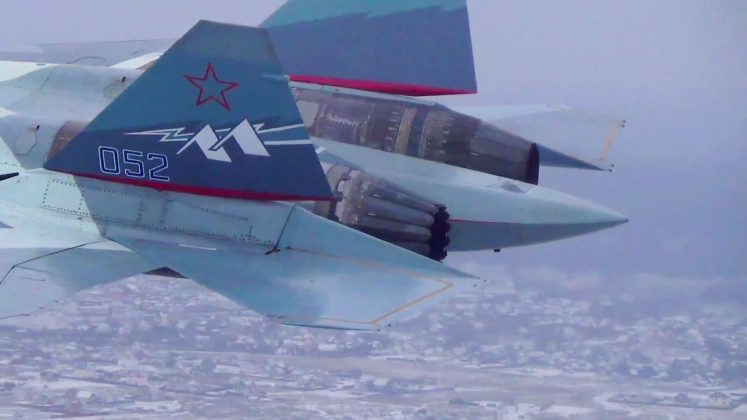
AL-51 – Su-57M: 177 kN Thrust
Known in its development stages as the Saturn 30, after the name of the firm primarily responsible for the program UEC Saturn, the AL-51F was developed for Russia’s second and much more conservative fifth generation fighter program the Su-57, and is expected to enter service on serial production models before the end of 2026. The Su-57 was designed to prioritise minimal operational costs and maintenance needs, with the AL-51F accordingly being a highly cost effective design with much lower lifetime costs than the AL-31 variants and AL-41F-1S currently powering Russian fighters. The engine is still significantly more powerful than the most powerful Western engine integrated onto a twin engine fighter, the F-22’s F119, has a maximum thrust 12 percent lower at 156 kN. The engine’s thrust vectoring capabilities, high fuel efficiency, and the Su-57’s relatively light weight, between them are expected to make the fighter the most manoeuvrable in the world at low speeds, and possibly at high speeds where it will be rivalled primarily by the J-20. Su-57s integrating the new engine are expected to receive the designation Su-57M.
